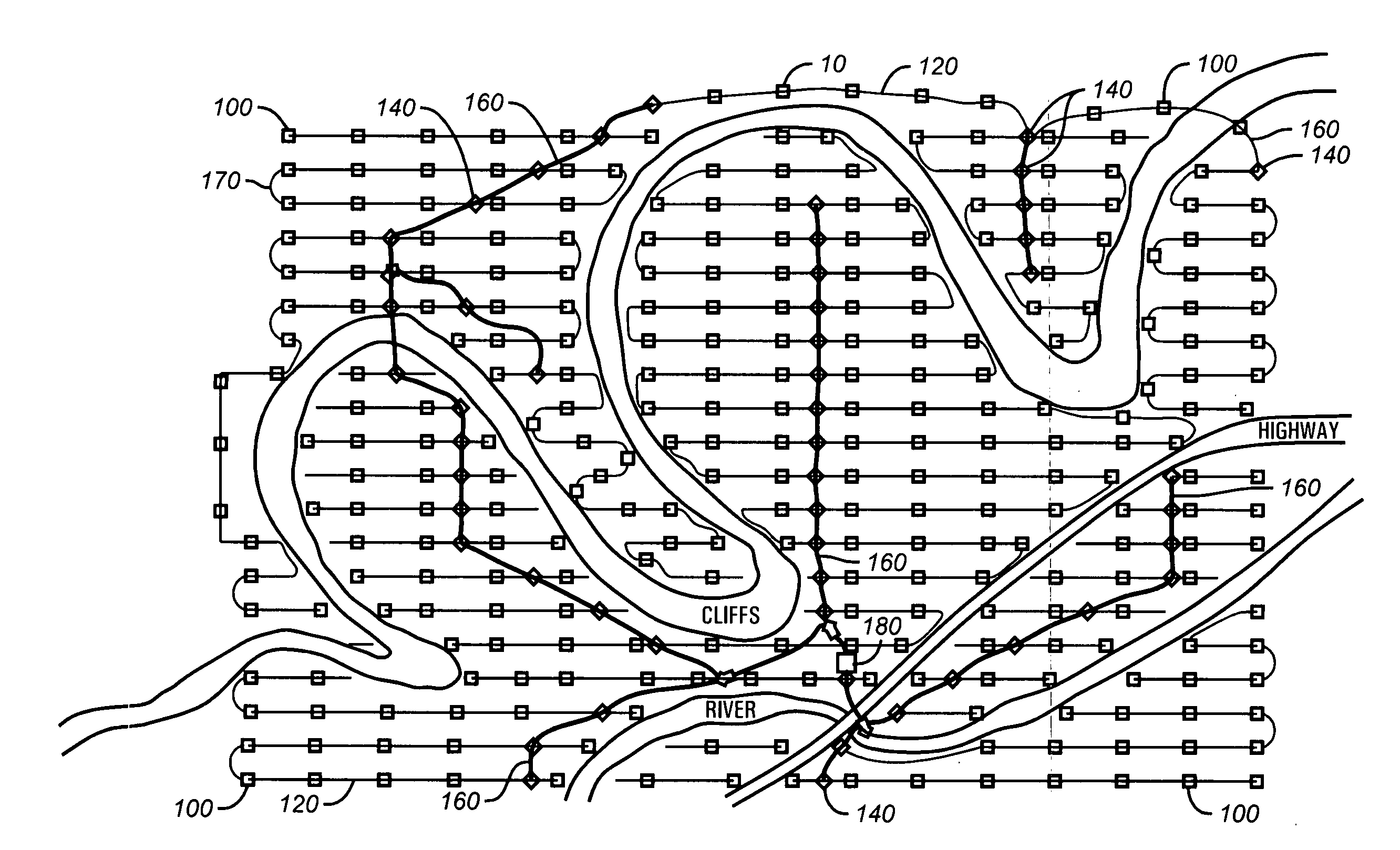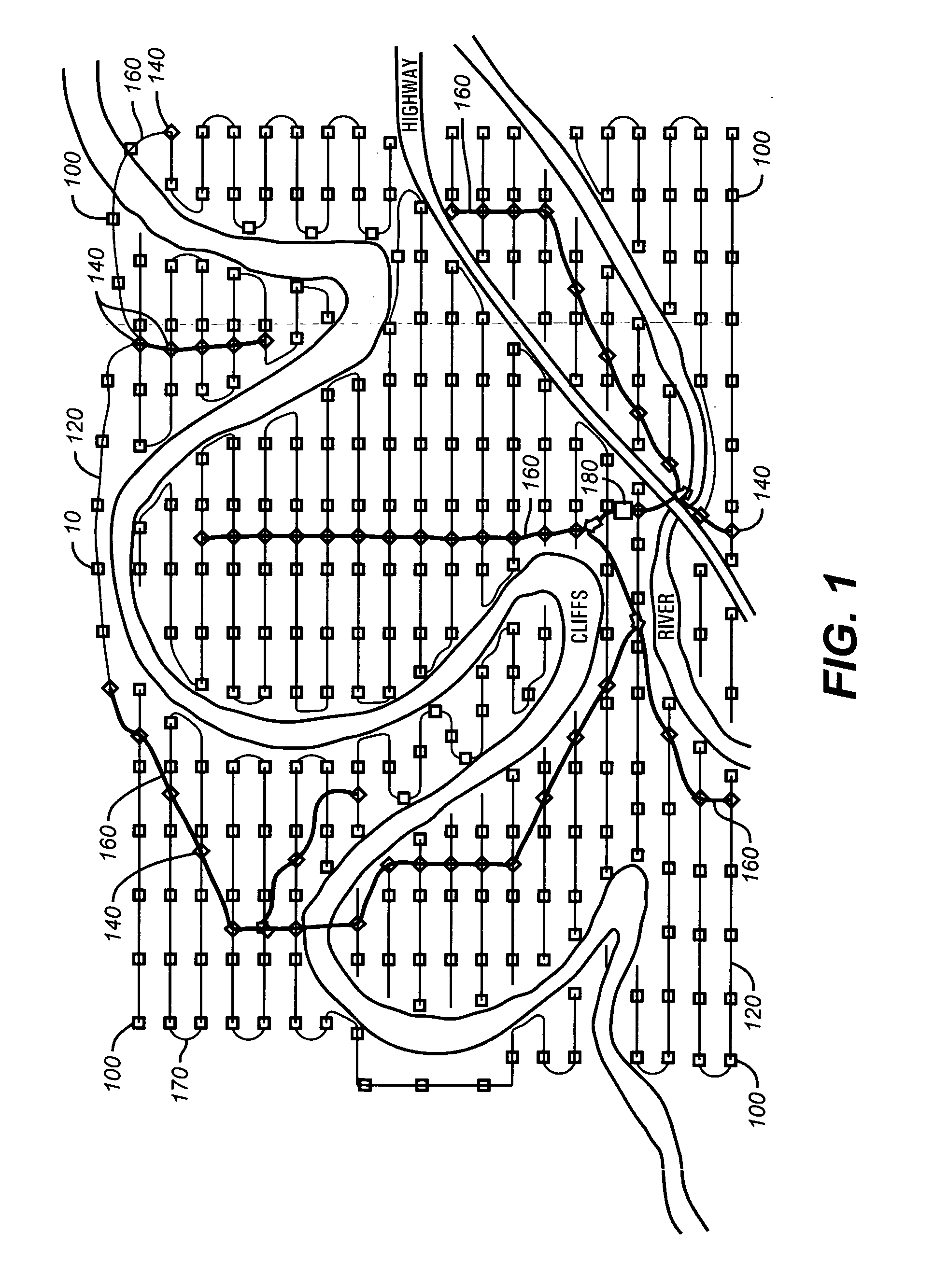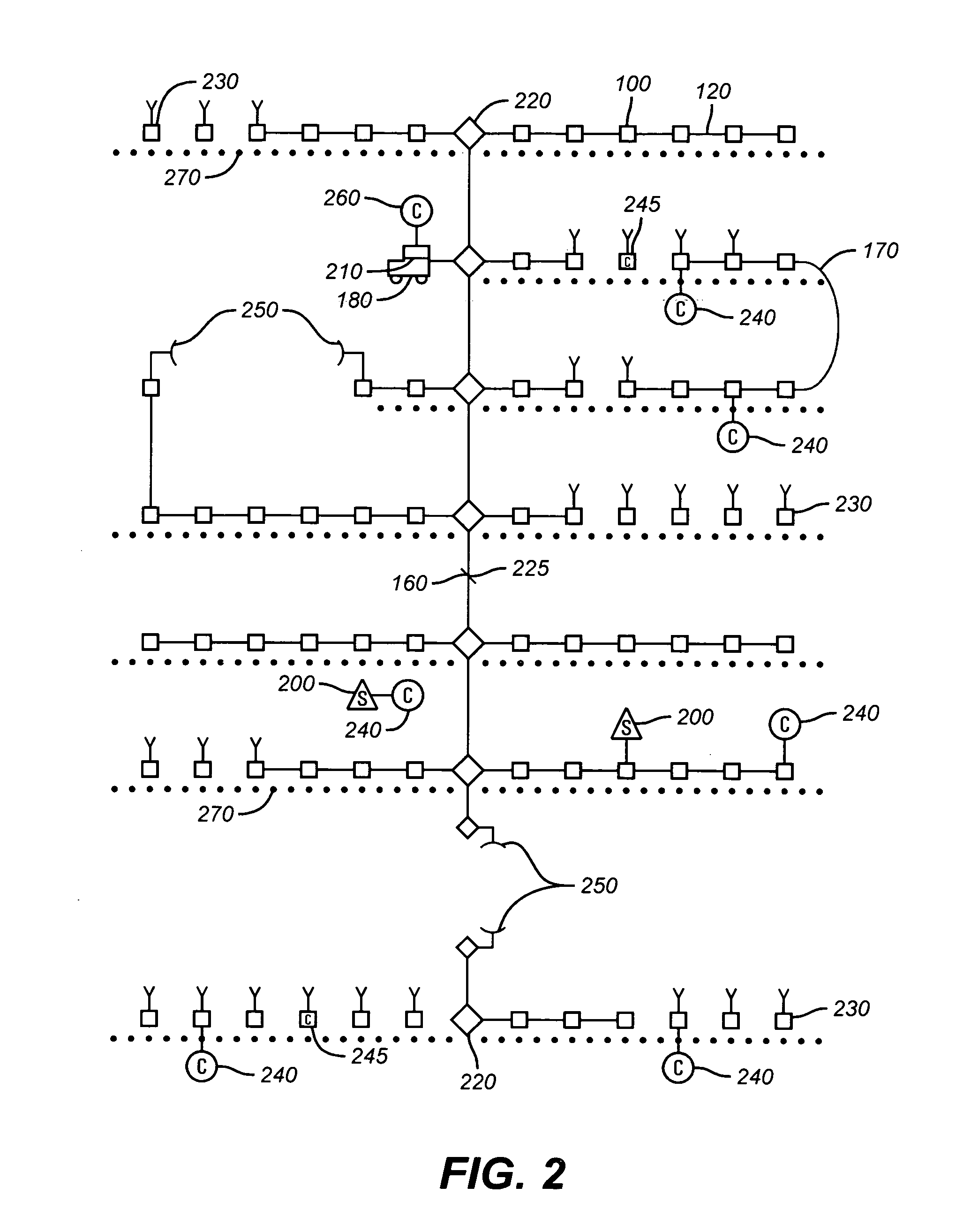Stabilizing remote clocks in a network
a remote clock and network technology, applied in the field of seismic survey equipment, can solve the problems of full duplex radio system, erroneous interpretation of subsurface geology and fluid distribution, and degradation of the final, so as to improve the oscillator stability of distributed remote clocks and reduce the inherent stability. the effect of instability
- Summary
- Abstract
- Description
- Claims
- Application Information
AI Technical Summary
Benefits of technology
Problems solved by technology
Method used
Image
Examples
Embodiment Construction
[0029]The methods and apparatus disclosed in U.S. Pat. No. 7,269,095 are relevant to the new invention and that disclosure is incorporated herein for reference and combination with this new invention, as may be useful in the implementation of the new invention. The methods disclosed in U.S. Pat. No. 7,269,095 provide a means of synchronizing a Remote Clock to the Master Clock or proximate High Precision Clock but do not in any way effect a stabilization improvement in the Remote Clock (or clocks). The synchronization process brings the two clocks to the same or very nearly the same calendar time at the instant of synchronization. However, if the Remote Clock suffers from clock drift at near its maximum specified rate (such as 2.5 ppm) due to inherent instability of its oscillator, the synchronization procedure must be repeatedly applied to keep the clocks closely synchronized.
[0030]For reference, a typical seismic survey grid is shown schematically by FIG. 1 to include a large numbe...
PUM
 Login to View More
Login to View More Abstract
Description
Claims
Application Information
 Login to View More
Login to View More - R&D
- Intellectual Property
- Life Sciences
- Materials
- Tech Scout
- Unparalleled Data Quality
- Higher Quality Content
- 60% Fewer Hallucinations
Browse by: Latest US Patents, China's latest patents, Technical Efficacy Thesaurus, Application Domain, Technology Topic, Popular Technical Reports.
© 2025 PatSnap. All rights reserved.Legal|Privacy policy|Modern Slavery Act Transparency Statement|Sitemap|About US| Contact US: help@patsnap.com



